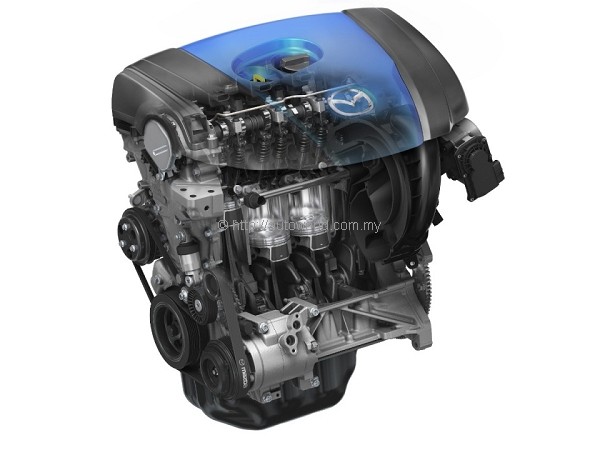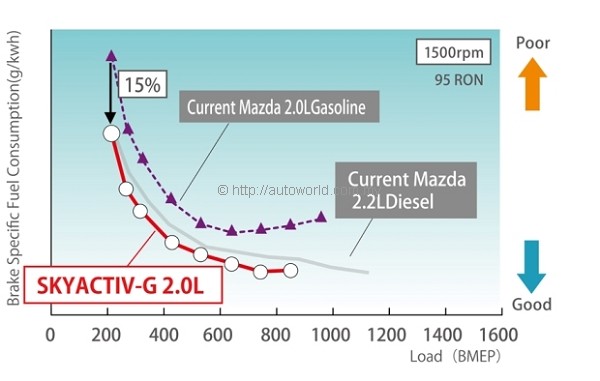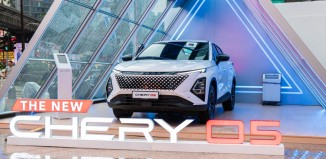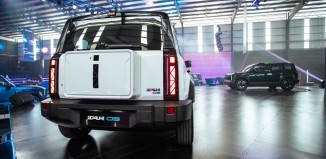Mazda’s SkyActiv Technologies Promises a Vehicle with 30 kilometres per litre Fuel consumption
After more than 120 years of development in automotive engine technologies, it is difficult to imagine that there is any ground left uncovered. In the last twenty or so years, there has admittedly been hardly any ground-breaking advancements in engine design, and most of the improvements in power output and fuel efficiency can be attributed to weight savings, developments in material technologies, and more precise electronic control of fuelling.
In the field of turbo-charging, the turbocharger remains much the same as the early editions, but improvements in the design of the fins, coupled with vast improvements in the electronic control systems and heat management systems makes the modern turbo charged engine as efficient and as durable as a conventional engine, whilst developing up to 50 percent more power. In the field of fuel injection, improved injector designs coupled with more precise engine control units has resulted in more powerful, yet fuel efficient engines.
The fact remains, however, that 70 to 80 percent of the energy contained in fuel is lost within the vehicle’s power train, and fails to be transferred as motive power to its wheels. In the quest for better fuel efficiency, many automakers are down-sizing engine capacities and are working on refining fuel management and engine management systems even further. The world is also looking at hydrogen fuel cells as an alternative, but costs are still prohibitively high, and until such time as suitable solutions can be found, hybrids are an interim measure.
Mazda has a history of making the seemingly impossible possible, as can be seen by its commercializing the rotary engine back in the early eighties. One of Mazda’s recent developments is centred on an engine configuration that will move towards ideal combustion – Mazda it calls the Homogenous Charge Compression Ignition (HCCI) engine.
Challenging the status quo of engine building convention, the HCCI engines from Mazda have a hitherto thought to be unachievable compression of 14:1 for both the gasoline and diesel engines. For the record, most modern gasoline engines run on a compression ratio of between 10:1 to 11:1, and racing engines run a little higher with special fuels. Diesel engines, on the other hand, are thought to need a compression ratio that is higher than 16: 1. Thanks to this and a number of technological breakthroughs, Mazda is on the verge of introducing, in the very near future, a car that is capable of achieving up to 30 kilometres per litre of fuel, without using hybrid technology. The overall umbrella for this development is named SKYACTIV by Mazda.
According to Mazda, hybrids are good only in start-stop traffic situations, where there are opportunities for the vehicle to recover energy, for example, during braking and coasting, and when the car is idling in traffic, the engine is turned off while the energy saved in the batteries serve to restart the vehicle motion and keep the air-conditioners working. Mazda goes further to explain that during long journeys on highways, there is very little energy regeneration, so the fuel savings are not that great then. Hybrid vehicles also pose some potential environmental hazard as the batteries would need to be disposed at some time or other. With this in mind, they set to work to develop a vehicle that would be as economical, if not more economical, than a hybrid.
At the Mazda Forum 2010, held recently in Tokyo, Japan, the second in an annual series that started in year 2009, Mazda announced that by 2011, the Mazda 2 will be the first vehicle to be equipped with SKY-ACTIV technology. Knowing Mazda, this is not an idle boast – I would think that they would already have completed all testing and are gearing for production prior to this announcement.



























